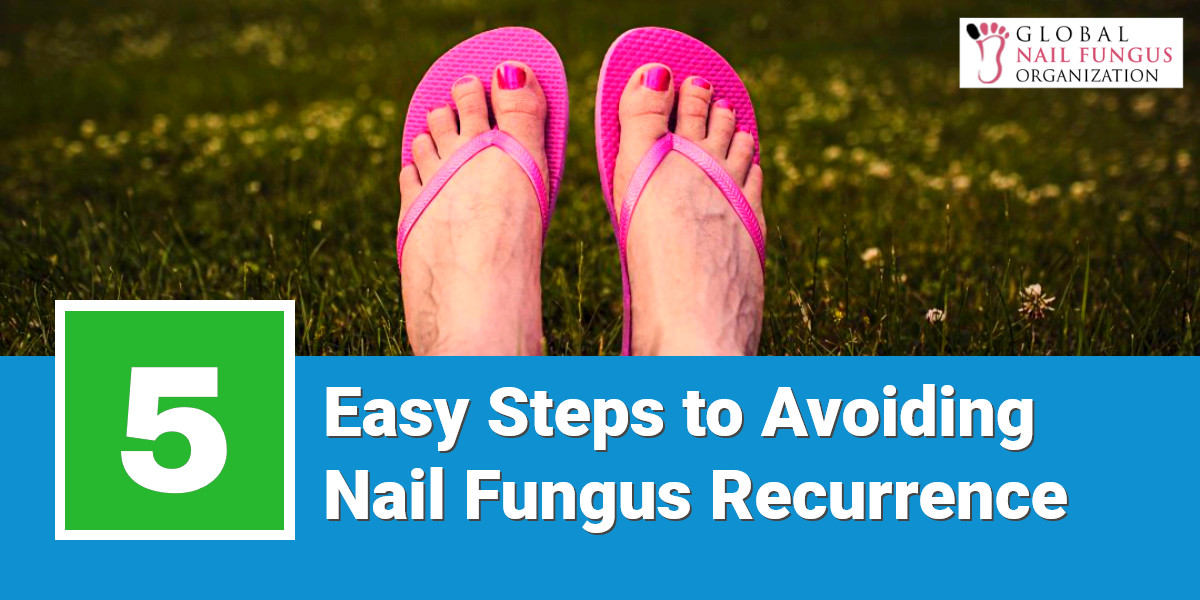 5 Easy Steps to Avoid Nail Fungus Recurrence
5 Easy Steps to Avoid Nail Fungus Recurrence
Table of Contents
Clear nails do not assure nail fungus cure
Treating nail fungus does not happen overnight. In fact, making the discoloration and the thickness of the nails disappear after undergoing a treatment does not give total assurance that the fungi that caused the infection are completely killed.
Amid available treatment options for nail fungus — such as topical, oral, surgical, and laser treatments — the rate of getting completely cured from a nail fungus treatment is only at about 60% to 80%.
Even a surgical treatment or the removal of the infected nail does not assure that the new nail will be 100% cured, which means that there are chances that the fungus may not have been killed.
Chances of recurrence of nail fungal infection
Recurrence of infection is common among people inflicted with nail fungus. According to studies, 1 out of 4 people with successful treatments suffer from reinfection.
Contributing to the tendency of nail fungus to recur is the fungus’ spores (or seed-like components) that eventually grow into new fungus. These spores usually grow in damp places like shoes, and can possibly reinfect nails.
People with a weak immune system, such as the elderly and those with diabetes, or people taking medications that suppress the immune system are also prone to a nail fungus reinfection.
For some, recurrence could also be caused by a genetic condition wherein the skin no longer recognizes the fungus as a harmful organism. In these cases, the immune system fails to act on fungal infections, especially if it has been in one’s body for a long time.
Recurrence of nail fungus infection may also be caused by other factors such as related diseases like athlete’s foot, poor hygiene, and incorrect medicine dosage.
Top 5 Steps to Prevent Nail Fungus from Returning
Because of the reasons mentioned above, post-treatment care should not be neglected. Nail care after treatment must be a combination of good hygiene, continuous application of treatment on the infected (or once-infected) nail, and treatment of other fungal infections. Here are 5 easy ways to avoid nail fungus recurrence:
-
Observe proper hygiene
To prevent the recurrence of nail fungal infection, proper hygiene and health practices such as these can help:
-
Practice extra caution following a nail removal surgery. Keep the nail bed and its surrounding area clean and dry because fungus thrives in moist and warm areas. On top of that, apply antibiotic ointment regularly to minimize the chances of infection.
-
Nail fungus on people with weak immune system may take longer to cure. These people need to take extra care of ensuring clean and dry hands and feet and regular application of treatments.
-
Refrain from walking barefoot in public areas, especially in damp areas such as bathrooms, pools, gyms, and locker rooms. Always wear shower slippers or flip flops.
-
Keep nails short and clean. When trimming nails, cut straight across and do not dig into the nail corners to avoid damage to the nail bed. Use a separate nail clipper for the affected nails to avoid cross-contamination. Also avoid sharing nail clippers.
-
Avoid applying nail polish. This may cause moisture and may worsen the nail infection. When going to a salon, ensure that they use sterilized tools.
-
Fungal infections can be passed from one person to another. Make sure that people in the household do not have fungal infection or if they do, ask them to have it treated.
2. Treat other fungal infections
Nail fungal infections may also be a result of other fungal infections that has spread into the nail. Skin fungal infections, such as athlete’s foot and psoriasis, can spread to the nails just by simply scratching the affected area. Have these infections cured using proper treatments to avoid them from spreading to the nails.
3. Apply anti-fungal treatments
It is recommended to use doctor-prescribed or over-the-counter topical treatments that contain undecylenic acid and tea tree oil. Some examples of over-the-counter treatments with these ingredients are Emoninail and Funginix.
Fungal nail infections cannot be cured using skin anti-fungal treatments such as imidazoles, allylamines, and pyridone ciclopirox olamine. While these treatments are used for treating skin fungus, they are ineffective in nail fungus treatment due to their inability to penetrate the nail.
Regular application of anti-fungal talc on the hands and feet, as well as inside the shoes can also help prevent the growth of infectious bacteria, such as fungi.
4. Preventing nail fungus through proper footwear selection and care
Choice of footwear, as well as improper care and usage, may also be the cause for some cases of toenail fungal infections. Follow these guidelines to help prevent nail fungus recurrence:
-
Discard shoes which may still be infected with fungus. Using them may cause the nail fungus to recur. Another option is to have them cleaned and treated with anti-fungal spray before using them again.
-
Shoes must be a perfect fit — not too tight and not too loose. Choose shoes that grip the heel firmly but allows free movement of the toes. Shoes that are too tight can cause damage to the nail bed or a separation of the nail plate from the nail bed. Such damage allows bacteria to penetrate the nails, resulting in nail fungus.
-
Use shoes that are made of canvas or leather. Some footwear, such as those made with synthetic materials, can make the feet sweat more and leads to the potential growth of fungus.
-
Do not use the same pair of shoes for consecutive days as much as possible, and make sure that shoes are completely dry before use.
-
Along with proper care for footwear and using the types of shoes that discourage fungal growth, also use socks that easily absorb sweat such as wool, nylon and polypropylene.
Avoiding Workplace Hazard
Daily activities at work may also affect the possible recurrence of nail fungus. This may include exposure to humid surroundings, being frequently exposed to water, and other workplace hazards.
If exposure to water, humidity, and hazardous environment is unavoidable, it is recommended to wear gloves and protective shoes, such as steel toe caps, These measures aid in preventing nail injuries, which increases the risk of nail fungus recurrence.
Conclusion: How to Avoid Nail Fungus
There is no single solution to completely combat nail fungus; it has to be a combination of an effective treatment, observance of proper hygiene, and different other ways to care for the hands and feet. It’s important to note that these tips must be followed on a regular basis to avoid a nail fungus infection from recurring after a treatment.










